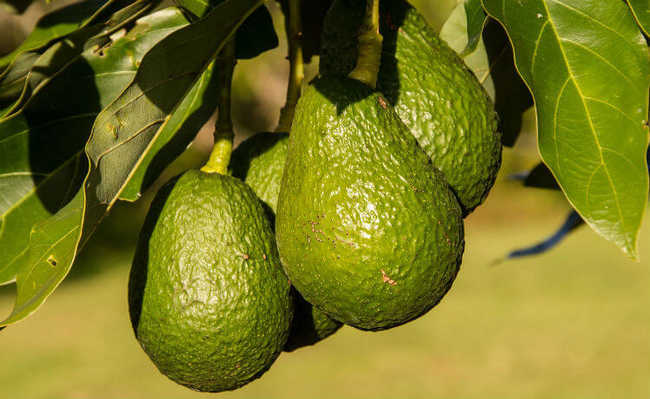Functional foods: what they are and examples
Avocado, beetroot, peanuts, tomato and olive oil are some functional foods, get to know others

What are functional foods?
Functional foods are those that provide health benefits, in addition to their basic nutritional functions, reducing the risk of chronic degenerative diseases, such as cancer and diabetes, among others.
The use of certain foods to reduce the risk of acquiring or developing diseases has been known for a long time. Hippocrates already said, about 2500 years ago: “let food be your medicine”.
The term "functional foods" was first used in Japan in the mid-80s of the 20th century and refers to processed foods that contain ingredients that aid in specific body functions as well as being nutritious. Called Foshu, or “Foods for Specified Health Use” (Functional Foods or Nutraceuticals, in Portuguese translation), they have a seal of approval from the Ministry of Health and Welfare of the eastern country. Currently, these products are present in several countries, framed in their specific legislation.
The National Health Surveillance Agency (Anvisa) determines rules and procedures to register functional foods in Brazil, in order to protect the consumer. To launch an item on the market with a food registration claiming functional health properties, the product must follow the Ministry of Health legislation and present a technical-scientific report with a lot of information that proves its benefits and the guarantee of safety for its consumption. According to Anvisa, functional foods are those that produce metabolic or physiological effects through the action of a nutrient or non-nutrient in growth, development, maintenance and other normal functions of the human body.
Within the concept of functional foods, which reduce or prevent the risks of chronic non-communicable diseases, it is possible to classify them into three types:
Foods with immunomodulatory properties
They act by modulating and activating cellular components and their chemical mediators, increasing the effectiveness of the immune system against different antigens, and preventing the appearance of pathology in the body. This group includes chemical compounds present in fruits, vegetables and teas, such as beta-glucan and phenolic compounds (catechins, flavonoids); in addition to probiotics and prebiotics.
Foods with antioxidant activity
They act on biological systems, eliminating oxidants (free radicals) or preventing their transformation into more toxic products. The main antioxidant nutrients are vitamins E and A (beta-carotene); vitamin C; trace elements such as zinc, copper, selenium and magnesium; in addition to active components such as terpenoids (carotenoids and lycopene).
Foods with omega 3 and omega 6 polyunsaturated fatty acids
They are essential substances, since the body cannot synthesize them. Omega 3 (alpha-linolenic acid) is the precursor of eicosapentaenoic (EPA) and decosahexanoic (DHA) acids, which are part of cell membranes and play a role in retinal function and brain development. Omega 6 (linoleic) originates arachidonic acid (AA), which is a constituent of the phospholipid membrane and a precursor of other important compounds involved in the regulation of blood pressure, heart rate, blood coagulation, vascular dilation and immune response.
- Foods rich in omega 3, omega 6 and omega 9: what benefits do they provide?
beta carotene
Beta-carotene is an antioxidant carotenoid pigment that reduces the risk of cancer and cardiovascular disease, it is one of the ways to indirectly obtain vitamin A. It is present in pumpkin, carrots, papaya, mango, apricot, spinach and kale.
- Seven Pumpkin Seed Health Benefits
- Carrot oil has great skin properties
- Detox cabbage juice: see benefits and recipes
Fibers
Fibers are polysaccharide carbohydrates and are divided into two categories: soluble and insoluble fiber. Solubles contribute to lowering the cholesterol level, preventing cardiovascular diseases, combating obesity, as satiety leads the individual to a lower food intake, delaying the absorption of glucose and even protecting against bowel cancer. Insoluble fibers, on the other hand, have the following functions: accelerating the speed of fecal transit, increasing fecal bulk, stimulating proper bowel function, preventing constipation and colorectal cancer. Present in fruits, vegetables and legumes in general and whole grains - it is worth remembering that the consumption of fiber must be followed by a large consumption of water so that they can perform the desired functions.
- What is agar-agar, what is it for and benefits
Compounds and foods in which they are present
Functional foods have in their composition bioactive compounds capable of acting as modulators of metabolic processes, reducing the risk of developing non-communicable chronic diseases (diabetes, cardiovascular diseases, Alzheimer's, Parkinson's disease, among others). Next, some bioactive compounds (except probiotics, which are a live microbial food supplement) currently known, their health benefits and in which foods are usually present will be presented.
Flavonoids
Flavonoids are oxidizing polyphenolic compounds (pigments) that reduce the risk of cancer and cardiovascular disease; currently more than eight thousand flavonoids have been identified. Present in natural grape juice, red wine, cherry, apple and vegetables.
- Flavonoids: learn about the various benefits of compounds present in fruits, vegetables and cereals
- Wine consumption and health: the benefits of resveratrol and the dangers of sulphites
Lycopene
Lycopene is an antioxidant carotenoid substance related to lowering the risk of prostate cancer. Present in tomatoes, watermelon, beets and peppers.
- Discover 12 benefits of beetroot
- Homemade Tomato Sauce: Learn How To Make Five Kinds
Isoflavones
Isoflavones are substances called phytoestrogens because they have a structural similarity to estrogen, and are related to a reduction in blood cholesterol levels and the risk of cardiovascular disease. Present in soybeans, alfalfa sprouts and flaxseeds.
- Herbicide used on soy and sugarcane causes cancer in rats
Fatty Acids: omega 3 (ω3)/ linolenic acid and omega 6 (ω6)/ Linoleic acid
Fatty acids are related to reducing vascular damage, preventing the formation of clots (thrombosis) and fat deposits (atherosclerosis); reducing total cholesterol and blood LDL by replacing saturated fatty acids with polyunsaturated ones. Present in oilseeds, avocado, olive oil and coconut oil.
- Discover the benefits of different types of olive oil
- Coconut oil: benefits, what is it for and how to use it
- Four recipes to put avocado in your routine
- Avocado vegetable oil is rich in nutrients and can serve many purposes.
- Practical, peanuts are a source of lipids and protein
- The benefits of avocado
- Cashew nuts: properties, benefits and risks
Probiotics: bifidobacteria and lactobacilli
Probiotics are a type of live microbial food supplement that beneficially affects its recipient. They favor gastrointestinal functions, reducing the risk of constipation and colon cancer; help balance the intestinal flora and inhibit the growth of pathogenic microorganisms, so foods that contain probiotics can be categorized as functional foods. Probiotics are present in fermented products such as sauerkraut (fermented cabbage) and kombucha, the drink.
Prebiotics: fructooligosaccharides and inulin
Prebiotics are non-digestible food ingredients that benefit the host by selectively stimulating the growth and/or activity of bacterial species in the colon. They are carbohydrates (dietary fibres) not digestible by our body, presenting the same health benefits as dietary fibre; in addition, they have a bifidogenic effect (stimulation of the growth of bifidobacteria - these bacteria suppress the activity of other bacteria that are putrefactive, which can form toxic substances). Present in vegetables such as onions, garlic, tomatoes, bananas, barley, chicory root, yacon potatoes, cabbage, among others.
New habits and cautions with false promises
There are many people out there who are changing eating habits and leaving a sedentary lifestyle. Practicing exercise and consuming foods that provide not only the nutrients necessary for the basic biological functions of our body, but also have a specific role in the physiological functions of the human body, promoting health and well-being, are great attitudes.
Given this scenario, the food industry has been investing in new processing technologies and new products, aiming at the development of healthier foods to serve the most demanding and informed consumers. However, it is necessary that the food industry, when producing a functional food, is committed to guaranteeing the final consumer the safety of these products and the veracity of the health effects they present.
It is common, nowadays, to observe information on the addition of vitamins and/or features that the product has on food packaging, but this may not always characterize an additional benefit for human health. The consumer must always be alert; sometimes the addition of a substance considered beneficial can be in too small an amount to actually provide benefits, requiring the ingestion of a very high amount of the product to obtain the desired benefit.
Another bias is the addition of “natural” antioxidants that help preserve and increase the shelf life of the product. This is the result of technological innovations to replace “chemical” antioxidants, but not always these “natural” antioxidants will also have antioxidant functions in the human body.
The best option for the ingestion of bioactive compounds is to maintain not only a functional diet, but also a varied diet rich in fruits and vegetables, cereals, seeds, olive oil or other sources of polyunsaturated oil. Always give preference to fresh foods or foods that have undergone little processing.
- What are fresh, processed and ultra-processed foods
Remember that before starting any diet or radically changing your eating habits, it is recommended to consult a nutritionist.










